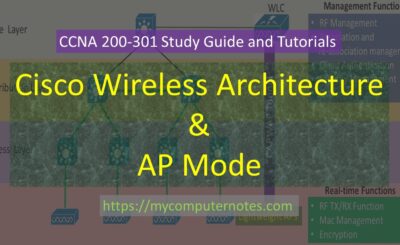In this section, we are going to discuss the basic operations of Rapid PVST+ spanning tree protocol. Rapid Per-VLAN Spanning Tree Plus (RPVST+) is a Cisco proprietary protocol that is an extension of the IEEE 802.1D Spanning Tree Protocol (STP). RPVST+ operates in the same way as STP to prevent loops in a Layer 2 network, but it provides faster convergence times and supports per-VLAN spanning-tree instances.
Overview of Basic Operations of Rapid PVST+
- Rapid Per VLAN Spanning Tree Plus (RPVST+) Protocol is the upgraded version of traditional STP (IEEE 802.1d).
- It is implemented on per VLAN basis.
- It has backward compatibility with the traditional STP (IEEE 802.1d).
- Rapid PVST+ is by default enabled on default VLAN (VLAN 1) on all Cisco Switch.
- It allows faster convergence time.
- The RPVST+ protocol builds a topology database of the network by exchanging Bridge Protocol Data Units (BPDUs) with neighboring switches.
- The switches use the information in the BPDUs to determine the root bridge for each VLAN and to calculate the shortest path to the root bridge.
- Each switch selects a root port for each VLAN, which is the port that provides the shortest path to the root bridge.
- The switches also select designated ports for each VLAN, which are the ports that connect to other switches and are responsible for forwarding traffic between VLANs.
- If a link or switch fails, the RPVST+ protocol detects the failure and converges the network topology by recalculating the shortest path to the root bridge for each affected VLAN.
- RPVST+ can also load-balance traffic across multiple links by using multiple spanning tree instances for different VLANs.
Comparison between standard STP (IEE 802.1d) and Rapid STP (IEEE 802.1w)
Standard Spanning Tree Protocol is the oldest version of STP. The rapid STP is the improved version of the standard STP. The main comparison between Standard STP and rapid STP is enlisted in 5 categories.
Port Roles
Both versions have the root port as well as the designated port and their functions are similar in both versions. The standard STP has only one blocking port, whereas rapid STP introduces two new ports that remain in the blocking state. One is the alternate port and the other one is the backup port. The alternate port is identical to the blocking ports and it is the second-best root port to the root bridge. If the current root port fails for any reason, the alternate port comes into action to take responsibility of the root port.
The backup port is used as the redundant non-designated port. If there is already a designated port forwarding to a segment, the other port is the backing port. In other words, other a backup port is a substitute to the same lan segment away from the root bridge.
In brief, we can say, the alternate port is the second best root port to the root bridge and the backup port is the second best-designated port to another switch or a hub but not to the root bridge.
In RSTP, there is another type of port called an edge port that is directly connected to endpoint devices such as workstations, pcs, or laptops. Edge ports don’t participate in the STP convergence process. It is always in a forwarding state, still, it does not cause any topology changes.
Port State
The standard STP has five port states namely forwarding, learning, listening, blocking, and disabled states, whereas the rapid STP has only three states forwarding, listening, and discarding states.
Link Types
RSTP introduces two new link types – point to point link and the shared link
If there is a full duplex link between the two switches, then it is called point to point link. If the link is a half-duplex link then it is a shared link. The hubs operate in half-duplex mode, hence the connection with the hub is the shared link, whereas most of the switches operate in full duplex mode the link between the switches is always point to-point.
In the RSTP process, only the point-to-point link is beneficial from rapid transition to the forwarding state.
RSTP provides faster topology change
In standard STP, whenever there is a topology change detected by any switch, it first tells the root bridge by sending its TCN BPDU frames. When the root bridge receives the message it sends out its TC BPDU message to every switch in the network.
But, rapid spanning tree, the switch that detects the topology changes directly sends out the TCN BPDU message to all the switches, It floods the message through the switches network, and does not wait for the root bridge for acknowledgment. This causes faster topology changes in rapid STP as compared to the standard STP.
RSTP provides faster convergence in response to the network changes
The following table compares the BPDU timers for convergence for the standard STP and the rapid STP.
| BPDU timers | Standard STP
(IEEE 802.1d) |
Rapid STP
(IEEE 802.1w) |
| Max age | 20 | 6 (3xHello times) |
| Delay forward for the listening state | 15 | 0 |
| Delay forward for the learning state | 15 | 0 |
| Total | 50 | 6 |
| ← Prev | Next → | |
| Different Types of Spanning Tree Protocols | Cisco Wireless Architecture and AP Mode |






